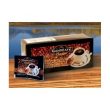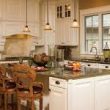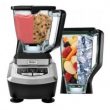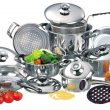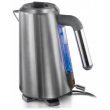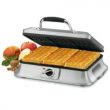Cake pans come in a staggering array of shapes and sizes and if you aren’t an expert baker, it can be a little confusing as to which is the one you need. Different pans obviously have different capacities as well as being shaped differently and by using the wrong pan, a cake could be too thin or too thick. Too thin and it could burn if you follow the instructions and too thick could leave it undercooked. So knowing which cake pan is the right one for the job is an important first step to making a cake.
How to measure a cake pan
Most cake pans will tell you what size they are before you buy them but if you need to check one you have or just like to check, you measure the cake pan from one inside edge to the other. This means you don’t include the thickness of the actual pan in the measurement. Similarly, to measure the depth, place the ruler inside the pan and measure to the top of the rim. Measuring volume can be done by pouring water in then tipping it to a jug to see how much it takes to fill to the level of the top of the pan.
Swapping and changing
Once you know how to measure a pan, it is easier to substitute one pan for another or see if one you have will do the job you need it to. For example, an 8 inch square pan has a pan area of 64 inches and can be substituted for a 9 inch round pan that has an area of 63.5 inches. This would mean you could use the same recipe in both without needing to adjust ingredients or cooking times.
Types of cake pans
Once you know what size cake pan you need, you can then asses the options available. Most recipes will tell you what size and type cake pan needed, especially if something particular such as a loaf pan or a jelly roll pan is required. The other main decision in what cake pan to buy is the material. Here are a few tips about the most common options.
Aluminium
- Good conductor of heat but shiny surface can prevent browning
- Heavy gauge best but also most expensive
- Not suitable for cooking anything acidic such as tomato based foods as this can cause a reaction in the material that alters taste
Anodized aluminium
Generally available in two types; silver and hard. Silver has gone through an electro-chemical process to harden the outer later while hard anodized has been through a similar process but for longer.
Silver is scratch resistant and non-stick as well as not peeling, blistering or rusting. It conducts heat well and is durable. Hard anodized is 10 times thicker than the silver version so metal utensils can be used with it.
Non stick
- Easy to clean and won’t spoil food by sticking
- Heat absorbent so can make food overly browned or dried out
- Can scratch so metal utensils cannot be used
Silicone
- Flexible and bendable
- Can be used in oven, microwave and freezers
- Doesn’t absorb heat
- Easy to remove cooked foods

